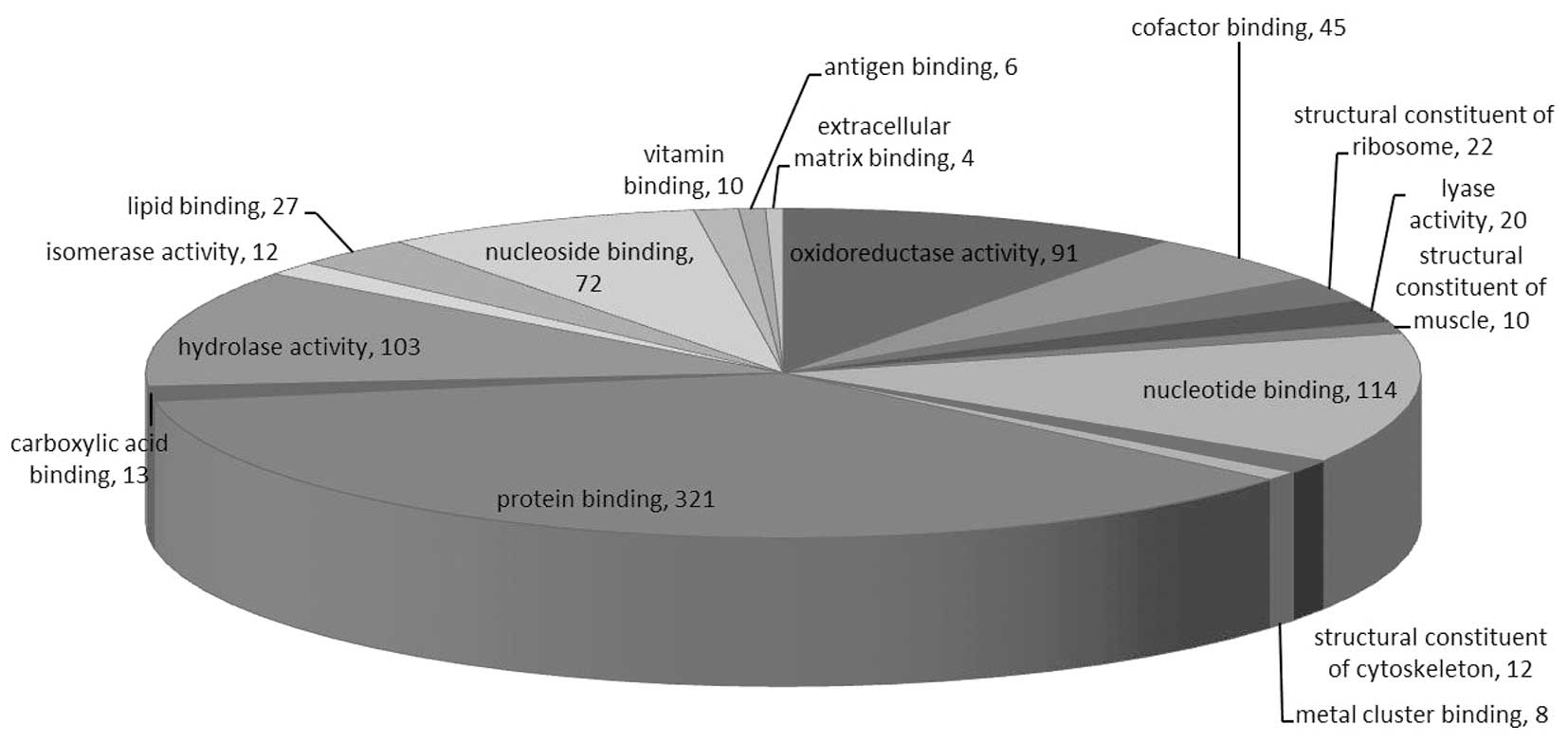|
1
|
Matousovic K, Konecný K, Mĕstecký J, et
al: IgA nephropathy. Significance of immunoglobulin A glycosylation
in pathogenesis and clinical presentation. Cas Lek Cesk.
141:729–734. 2002.(In Czech).
|
|
2
|
Barratt J, Smith AC, Molyneux K and
Feehally J: Immunopathogenesis of IgAN. Semin Immunopathol.
29:427–443. 2007. View Article : Google Scholar
|
|
3
|
Coppo R and Amore A: Aberrant
glycosylation in IgA nephropathy (IgAN). Kidney Int. 65:1544–1547.
2004. View Article : Google Scholar : PubMed/NCBI
|
|
4
|
Galla JH: IgA nephropathy. Kidney Int.
47:377–387. 1995. View Article : Google Scholar
|
|
5
|
Yu HH and Chiang BL: Diagnosis and
classification of IgA nephropathy. Autoimmun Rev. 13:556–559. 2014.
View Article : Google Scholar : PubMed/NCBI
|
|
6
|
He L, Liu H and Peng Y: Immune
pathogenesis of IgA nephropathy and its drugable targets. Zhong Nan
Da Xue Xue Bao Yi Xue Ban. 39:96–101. 2014.(In Chinese).
|
|
7
|
Jones AM and Nühse TS: Phosphoproteomics
using iTRAQ. Methods Mol Biol. 779:287–302. 2011. View Article : Google Scholar
|
|
8
|
Desouza LV, Voisin SN and Siu KW:
iTRAQ-labeling for biomarker discovery. Methods Mol Biol.
1002:105–114. 2013. View Article : Google Scholar : PubMed/NCBI
|
|
9
|
Unwin RD: Quantification of proteins by
iTRAQ. Methods Mol Biol. 658:205–215. 2010. View Article : Google Scholar : PubMed/NCBI
|
|
10
|
Glen A, Gan CS, Hamdy FC, et al:
iTRAQ-facilitated proteomic analysis of human prostate cancer cells
identifies proteins associated with progression. J Proteome Res.
7:897–907. 2008. View Article : Google Scholar : PubMed/NCBI
|
|
11
|
Wang LN, Tong SW, Hu HD, et al:
Quantitative proteome analysis of ovarian cancer tissues using a
iTRAQ approach. J Cell Biochem. 113:3762–3772. 2012. View Article : Google Scholar : PubMed/NCBI
|
|
12
|
Loei H, Tan HT, Lim TK, et al: Mining the
gastric cancer secretome: identification of GRN as a potential
diagnostic marker for early gastric cancer. J Proteome Res.
11:1759–1772. 2012. View Article : Google Scholar : PubMed/NCBI
|
|
13
|
Wang L, Dai Y, Qi S, Sun B, Wen J, Zhang L
and Tu Z: Comparative proteome analysis of peripheral blood
mononuclear cells in systemic lupus erythematosus with iTRAQ
quantitative proteomics. Rheumatol Int. 32:585–593. 2012.
View Article : Google Scholar : PubMed/NCBI
|
|
14
|
Chong PK, Lee H, Zhou J, et al: ITIH3 is a
potential biomarker for early detection of gastric cancer. J
Proteome Res. 9:3671–3679. 2010. View Article : Google Scholar : PubMed/NCBI
|
|
15
|
Wiela-Hojeńska A and Hurkacz M: The
significance of beta 2-microglobulin in diagnosis and therapy.
Postepy Hig Med Dosw. 52:507–514. 1998.(In Polish).
|
|
16
|
Sui W, Tang D, Zou T, et al: Differential
proteomic analysis of renal tissue in mesangial proliferative
glomerulonephritis using iTRAQ technology. J Nephrol. 26:191–198.
2013. View Article : Google Scholar
|
|
17
|
Puri TS and Quigg RJ: The many effects of
complement C3- and C5-binding proteins in renal injury. Semin
Nephrol. 27:321–337. 2007. View Article : Google Scholar : PubMed/NCBI
|
|
18
|
Cabré A, Lázaro I, Girona J, et al:
Retinol-binding protein 4 as a plasma biomarker of renal
dysfunction and cardiovascular disease in type 2 diabetes. J Intern
Med. 262:496–503. 2007.PubMed/NCBI
|
|
19
|
Peters HP, van den Brand JA and Wetzels
JF: Urinary excretion of low-molecular-weight proteins as
prognostic markers in IgA nephropathy. Neth J Med. 67:54–61.
2009.PubMed/NCBI
|
|
20
|
Nitta K, Tsutsui T, Ozu H, et al: Beta
2-microglobulin as an indicator of interstitial cell infiltration
in IgA nephropathy. Nephron. 74:219–220. 1996. View Article : Google Scholar : PubMed/NCBI
|
|
21
|
Sun L, Qi Q, Zong G, et al: Elevated
plasma retinol-binding protein 4 is associated with increased risk
of type 2 diabetes in middle-aged and elderly Chinese adults. J
Nutr. 144:722–728. 2014. View Article : Google Scholar : PubMed/NCBI
|
|
22
|
Baboolal K and Meyer TW: The effect of
acute angiotensin II blockade on renal function in rats with
reduced renal mass. Kidney Int. 46:980–985. 1994. View Article : Google Scholar : PubMed/NCBI
|
|
23
|
Koch A, Weiskirchen R, Sanson E, et al:
Circulating retinol binding protein 4 in critically ill patients
before specific treatment: prognostic impact and correlation with
organ function, metabolism and inflammation. Crit Care.
14:R1792010. View
Article : Google Scholar
|
|
24
|
Bizzarro V, Fontanella B, Franceschelli S,
et al: Role of Annexin A1 in mouse myoblast cell differentiation. J
Cell Physiol. 224:757–765. 2010. View Article : Google Scholar : PubMed/NCBI
|
|
25
|
Feng T, Cong Y, Qin H, et al: Generation
of mucosal dendritic cells from bone marrow reveals a critical role
of retinoic acid. J Immunol. 185:5915–5925. 2010. View Article : Google Scholar : PubMed/NCBI
|
|
26
|
Onda K, Ohi H, Tamano M, et al:
Hypercomplementemia in adult patients with IgA nephropathy. J Clin
Lab Anal. 21:77–84. 2007. View Article : Google Scholar : PubMed/NCBI
|











